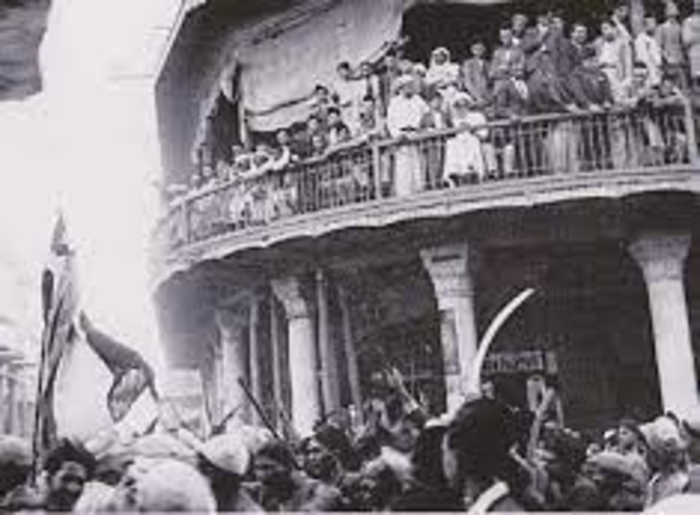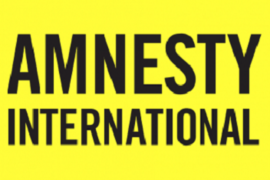A Times review, written by historian Max Hastings, of a book by Avi Shlaim (“I was the wrong kind of Israeli — memoirs of an Arab-Jew by Avi Shlaim”, June 4) legitimised suggestions by the Israeli-British academic that Iraqi Jews and Israel were responsible for antisemitism in Iraq during the 1940s and 50s.
Shlaim is an Oxford University anti-Zionist academic who was born in Iraq, fled as a teen with his family to Israel in the 1950s, but has resided in the UK since 1966. His work has been roundly criticized for its shoddy research and clear political biases. He characterised Zionism as the greatest single threat to Jews in the world – and, consistent his new book, has blamed Jews for the rise of antisemitism in Europe.
Before addressing the issue of Iraqi Jews, here’s one egregious distortion in the Times review, where Hastings, in his own words, approvingly cites Shlaim deploring “the cruelty of Israel’s 1948 expulsion of 700,000 Palestinians“.
However, not even the most pro-Palestinian outlets, such as the Guardian, claim that 700,000 Palestinians were all expelled.
In fact, most of the Palestinians who were displaced during the Arabs’ 1948 war of annihilation against Israel did so to flee the violence, or at the behest of their own leadership, who hubristically couldn’t imagine losing to the nascent Jewish state. Tellingly, roughly half of those Palestinians fleeing did so between November 1947 and May of 1948 – that is, BEFORE the war broke out.
Now, to the main focus of our post, the paragraph where Hastings writes the following:
The ahistorical suggestion peddled by Shlaim, uncritically cited by the Times, is that Jews, and the creation of the Jewish state, caused Iraqis to “turn on Jews”, and that antisemitism was, up until then, non-existent. However, it should be uncontroversial to note that any Iraqis who believed in “Jewish complicity” in the British-Iraqi war of 1941, or, who were driven to hate Jews by the fact of Israel’s creation in 1948, were, by definition, a priori antisemitic.
Moreover, let’s remember – in response to those who would defend The Times’ reviewer on the grounds that he may not necessarily agree with Shlaim’s words – that a book review is not a primary school book report. Good literary criticism is, by definition, an effort to not only summarise the text, but to contextualise, scrutinise and evaluate it, as well.
Even leading aside his extremely misleading claim that Jews were treated with tolerance in majority Muslim countries for centuries, Hastings fails his main task in the passage above, by failing to call out Shlaim’s antisemitic logic: his suggestion that it wasn’t anti-Jewish racism, but, in effect, Jews’ own behavior which prompted Iraqis to “turn on the Jews”.
But, to more thoroughly unpack the enormity of the lies peddled in the Times about the origins of Iraqi violence and hostility towards Jews, we’ll turn to our CAMERA colleague Gilead Ini, who, in 2007, addressed in detail a BBC article on the same topic, demonstrating, among other important facts, that Iraqi antisemitism clearly pre-dated the 1940s.
Iraqi independence in 1932, and the subsequent rise of Nazi influence in the country is widely regarded as a starting point for discussion of the modern history of Babylonian Jews. Maurice M. Roumani, director of the J.R. Elyachar Center for Studies in Sephardi Heritage at Ben-Gurion University of the Negev, noting that “The Government of Iraq began to take specifically anti-Jewish steps practically from the moment of its independence; in 1934 the teaching of Hebrew was prohibited and students’ entry into high schools and universities restricted. Jews began to be dismissed from certain government positions. Physical attacks on Jews in Baghdad — including murders — became frequent from 1936 on; anti-Jewish propaganda was spread by an openly pro-Nazi and anti-Zionist regime. The tension and “shadowy persecution” erupted into violence in other cities too, where local Muslim leaders used the opportunity to extort money from the Jews.”
…
In September and October 1936, Jews were murdered in Baghdad and Basra, and on Yom Kippur that year a bomb was thrown into a Baghdad synagogue.
In 1939, the Iraqi public school system began to follow a Nazi education model, complete with praise for Hitler and descriptions of Jews as an internal enemy.
The situation worsened in 1941. A new Iraqi government, backed by Haj Amin al Husseini, the Grand Mufti of Jerusalem best known for his collaboration with the German Nazi leadership and his role in anti-Jewish massacres in Palestine, forcefully took power in April of that year, and the Jews of Iraq immediately felt the impact.
British journalist Marina Benjamin described in a book about her family’s life in Baghdad the month that followed the coupe d’etat: “…the Jews were harassed by pro-Nazi elements mobilized by the rebel government. They had to contend with swastikas being crudely daubed all over the Jewish quarter and with direct intimidation by the Futuwwah [paramilitary youth organization], whose members brought rather too much enthusiasm to their new role of policing Baghdad. … the Jews served as punching bags ….
Hardly a day passed without some Jew or other being hauled up by the police and accused of signaling to British planes flying overhead. …
On May 6, 1941, a mob armed with knives and cudgels stormed the [Jewish] hospital looking for British agents who had reportedly based themselves there in order to signal to enemy bombers. The vigilantes attacked patients and staff, shooting indiscriminately.”
Then, on the first two days of June, 1941, the Jews of Baghdad faced a devastating pogrom, known to Iraqis as the Farhoud.
Bat Ye’or, who writes about the treatment of minorities under Islamic rule, described the event as follows: “Iraqi soldiers, police and members of youth groups seized Jewish pedestrians, bound them hand and foot, and threw them under the wheels of tramcars; others were stabbed. Murder, pillage, rape, and the burning of Jewish shops and houses continued for two days …”.
Indiscriminate looting of Jewish property, meanwhile, was urged with the slogan “Mal el Yehud halal,” or “Jewish property is kosher for the taking”.
In two days, roughly 200 Jews were killed, 2,000 were wounded, and hundreds of homes and businesses were looted or burned.
The Farhoud, which devastated the confidence of the Iraqi Jewish community, might be described as the beginning of its end. Though the next six years would be relatively quiet, the stage was set for the eventual wholesale emigration/expulsion of Iraq’s Jews. Swastikas began “appearing everywhere.” An ominous 1942 British intelligence report noted that “the Iraqis will punish the Jews eventually”
Indeed, the next phase of anti-Jewish hostilities — perhaps the predicted “punishment” — began in 1947, in the wake of the UN decision to partition Palestine. The Iraqi government quickly adopted what author and journalist Edwin Black described as “Nazi confiscatory techniques,” levying “exorbitant fines as punishment for trumped-up offenses.” Zionism was made a criminal offense. As Arab countries invaded the newly declared Jewish state, the Iraqi police ransacked Jewish homes and arrested hundreds of Jewish citizens. Hundreds more were dismissed from their public jobs. Crippling restrictions targeted Jewish commerce and travel. The government seized Jewish property, cut off municipal services to Jewish neighborhoods, and shut down Jewish newspapers.
The Jewish community’s sense of security was further eroded when Shafiq Adas, the richest Jew in Baghdad, was publicly hanged — amidst public rejoicing — after being convicted for allegedly selling scrap metal to Israel and having communist affiliations.
…
In response to these conditions, an increasing number of Jews emigrated illegally — legal emigration was not permitted — to Iran. Finally, in March 1950, the Iraqi government passed a law permitting Jews to leave the country, though at the cost of losing their Iraqi citizenship. A subsequent law froze the property of those who registered to leave.
Researcher Esther Meir-Glitzenstein noted that “what had begun as voluntary emigration turned into an expulsion.” Jews were reportedly threatened with murder, forced to hand over their property, and escorted from their homes by the police.
Eventually, about 120,000 people — almost the entire Jewish community — would escape the oppression, with little more than the clothes on their backs. Only 6,000 remained behind.
Finally, Hastings’ Times review also uncritically cites Shlaim’s endorsement of the conspiracy theory that ‘the Zionists’ were behind a series of bombings of Jewish targets in Iraq in 1950 -51. As the site Point of No Return, which highlights the plight of Jewish refugees from Arab lands, noted in response to this allegation, that “theory is even disputed by ‘new historians’ such as Tom Segev, and was effectively rebutted at a conference in London by David Kheder Bassoon.”
Tellingly, Hastings not only previously expressed admiration for Shlaim, but, during the 2nd Intifada, wrote a Guardian column blaming Jews and Israel for the rise of antisemitism in Europe. So, the fact that he evidently accepts the author’s similar victim-blaming – based on egregiously counter-factual history – as well as the erasure of Iraqi antisemitism and ethnic cleansing, isn’t at all surprising.







Avi Shlaim is also an apologist for Palestinian terrorists.
Google the article. Sharon has opened the gates of hell. Avi Shlaim. March 29, 2004.
Shlaim said Israel’s assassination of Sheikh Ahmad Yassin, founder and spiritual leader of Hamas, marked an extraordinarily dangerous escalation in the conflict between Jews and Arabs in Palestine.
My comments.
Schlaim thinks Jews live in some Roman colonialist name called Palestine.
The name Palestine is named after the Philistines, not the Palestinians or any Arab group.
The name Palestine was applied by the Romans, as a chagrin against Israel.
Schlaim was a supporter of this mass murderer Yassin.
Avi Shlaim was upset that Israel killed this Palestinian mass murderer of Israeli civilians.
Sheikh Ahmed Yassin was behind the horrifying wave of murderous terrorist attacks during the Second Intifada.
In his final years, he was ultimately responsible for the murders of 377 Israelis in attacks that left another 2,076 wounded. Former head of the Shin Bet Avi Dichter said that Yassin “only looks like the brother of Mother Theresa. I’ve never encountered so much evil in such a small body.”
Jews are the cause of antisemitism whether in Iraq or anywhere else. We cause antisemitism simply by having the effrontery to be born. Anything we do thereafter is viewed in the most critical and pejorative way. Jewry has been aware of this state of affairs for thousands of years.
In a recent interview in the Neue Zürcher Zeitung , Max Hastings says that he and his wife no longer invite people to their home who voted for Brexit. In the interview the old man comes across as a leftist radical who has lost touch with reality.
Camera UK articles are no longer sharable. Why?
There’s a technical problem with the sharing feature that we’re currently trying to fix.